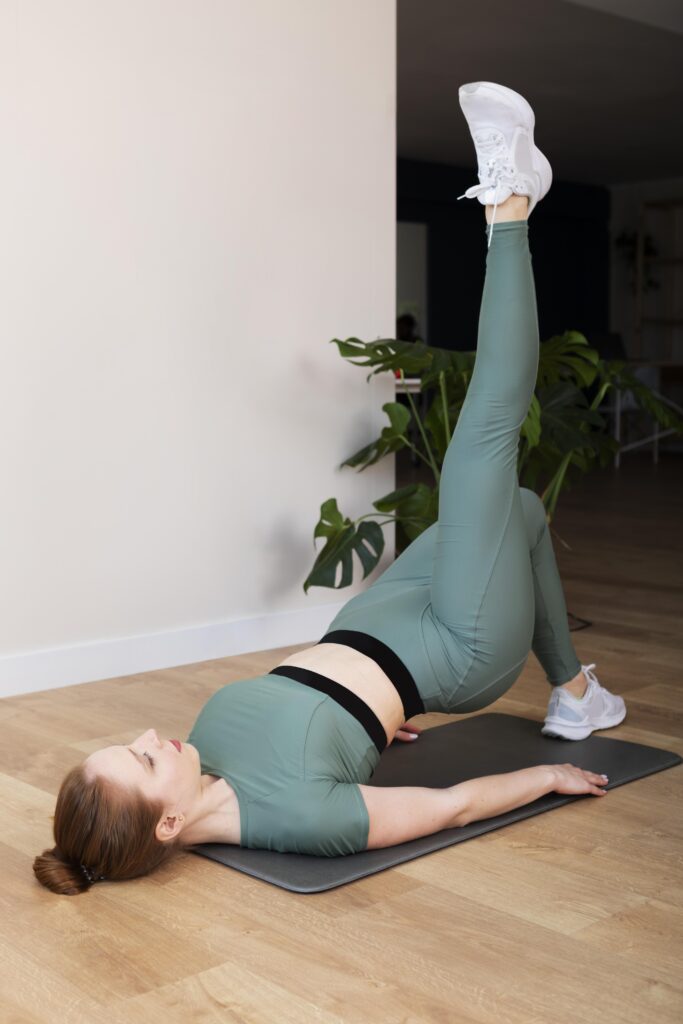Introduction: What Are Kegel Exercises?
Kegel exercises are a simple yet powerful way to strengthen the pelvic floor muscles, which support vital organs such as the bladder, uterus, and rectum. While often associated with women, Kegel exercises are beneficial for both men and women, improving overall pelvic health and providing numerous health benefits. In this post, we’ll explore the benefits of Kegel exercises, including how they can improve bladder control, enhance sexual health, and help with postpartum recovery.
Whether you’re a child, an adult, or a senior, the benefits of Kegel exercises can improve your quality of life. Read on to find out why this easy-to-do exercise should be a part of everyone’s wellness routine.

What Are Kegel Exercises?
Before diving into the benefits of Kegel exercises, let’s first define them.
Kegel exercises involve contracting and relaxing the muscles of the pelvic floor. These muscles form a sort of “hammock” that supports organs such as the bladder, uterus, and intestines. Kegel exercises are done by tightening these muscles for a few seconds and then releasing them. Over time, doing Kegel exercises regularly can strengthen these muscles, leading to various health benefits.
5 Benefits of Kegel Exercises
Kegel exercises are extremely helpful, regardless of your objective of reducing urinary incontinence, healing after childbirth, or sexual well-being. Let’s take a look at 5 benefits of Kegel exercises that can make a real difference in your life:
1. Improved Bladder Control
Kegel exercises have been known to assist with some of the problems associated with bladder control being one of the most known advantages. The pelvic floor muscles are thus very important in helping to regulate the passage of urine. Regular practice of these muscles through Kegel exercises aids in preventing urinary incontinence – a state where you lose bladder control.
How Kegels Help:
- Through the exercises, the pelvic floor is made stronger hence can effectively prevent any leakage caused by the bladder and the urethra.
- It may prove useful for women who have become incontinent after childbirth or men who might have problems with urinary leakage after a prostatectomy.
Pro Tip: There is always a way of feeling the pelvic floor muscles especially if you cannot do so when you are not holding urination, you need to try and stop mid-flow next time you are in the comfort room. The muscles that you use in doing this are those that Kegel exercises will seek to strengthen.
2. Enhances Sexual Health
There are also other advantages such as improvement in sexual well-being as another reason why Kegel exercises are important. With the frequency of executing Kegels, blood circulation in the lower abdomen also rises and contributes to enhanced movements and increased sensitivity so desired in intimate relationships of men and women alike.
How Kegels Help:
- In women, specific Kegel exercises lift the pelvic floor muscles and thus can cause increased vaginal tightness, which results in better feelings during intercourse.
- In men, strengthening the pelvic floor is proven to be effective in erectile dysfunction and endurance.
- Some of the benefits of Kegel exercises include; Regaining pelvic muscle control; this comes in handy, especially during sexual activities as both males and females can reach and experience more satisfying sex.

3. Supports Postpartum Recovery
A woman’s body structure, in particular the pelvic muscles, can become compromised during childbirth due to some degree of muscle weakness. Contrary to the belief held by many new mothers, Kegel exercises are one of the most recommended ways through which a woman can try to rebuild her pelvic floor muscles after childbirth.
How Kegels Help:
- The benefits of Kegel exercises after childbirth include improved bladder control and faster recovery of pelvic floor strength.
- They can also minimize the risk of a situation whereby the uterus the bladder, or any of the other organs become shifted to a lower part of the cavity that contains the pelvis.
Kegel exercises are often recommended by doctors during the postpartum period to help restore pelvic health and ensure proper muscle function.
4. Reduces Pelvic Pain and Pressure
They include those that may result from surgery, childbirth, or other ongoing diseases such as pelvic organ prolapse. This discomfort can be relieved by performing pelvic floor muscle exercises also known as benefits of Kegel exercises.
How Kegels Help:
- Kegel exercises improve blood flow to the pelvic region, which can reduce inflammation and relieve pressure in the pelvic organs.
- Regular practice can help alleviate the discomfort associated with conditions like prolapse or chronic pelvic pain.
If you’re experiencing pelvic pain, speak to your healthcare provider about incorporating Kegel exercises into your daily routine.

5. Prevents Pelvic Organ Prolapse
Each time the pelvic floor muscles are unable to hold the organs firmly, these organs will slide down thus resulting in the condition known as pelvic organ prolapse which affects the bladder, uterus, or rectum. It may cause the sensation of swelling or protruding in the lower abdominal region, and other complications.
How Kegels Help:
- The benefits of Kegel exercises include improving the strength and tone of the pelvic floor and reducing the risk of prolapse.
- Also, pelvic muscles control the position of the organs and their exercises prevent uncomfortable and often painful consequences of prolapse.
Kegel exercises are an excellent preventive measure, especially for women over 40 or those who have had multiple pregnancies.
Table: Quick Comparison of the 5 Benefits of Kegel Exercises
| Benefit | How It Helps | Who Can Benefit |
|---|---|---|
| Improved Bladder Control | Strengthens pelvic floor to prevent leaks | Women after childbirth, men after surgery |
| Enhances Sexual Health | Increases blood flow, improves muscle tone, enhances sensitivity | Both men and women |
| Supports Postpartum Recovery | Helps restore pelvic floor strength after childbirth | New mothers |
| Reduces Pelvic Pain and Pressure | Relieves discomfort, improves blood flow, reduces inflammation | People with pelvic pain or prolapse |
| Prevents Pelvic Organ Prolapse | Strengthens pelvic floor to keep organs in place | Women, especially those over 40 |
How to Do Kegel Exercises Correctly
While the benefits of Kegel exercises are clear, performing them correctly is key to getting results. Here’s how you can do Kegel exercises at home:
Step-by-Step Guide:
- Find Your Pelvic Floor Muscles: The easiest way to locate these muscles is by stopping the flow of urine while you’re going to the bathroom. Once you feel the muscles that do this, you’ve found the right spot.
- Contract the Muscles: Tighten the pelvic floor muscles for about 5 seconds. You should feel the muscles lift inward.
- Relax and Repeat: Release the muscles and relax for about 5 seconds. Repeat the contraction and relaxation process 10-15 times per session.
- Consistency is Key: Aim to do Kegel exercises 3 times a day, with each session lasting about 10-15 minutes.
Tip: Be careful not to tighten your abdomen, thighs, or buttocks while doing Kegel exercises. Only the pelvic floor muscles should engage.
When Should You Do Kegel Exercises?
For the best effect, it is advisable that Kegel exercises should be included in your daily regime. They can be done at any time and anywhere; in front of the computer, while watching television, or even before going to bed. It is important to ensure that you are regular when practicing Kegel exercises if you are to enjoy their impact. Consistency is crucial to experiencing the benefits of Kegel exercises.
Who Should Do Kegel Exercises?
Although the Kegel exercises are at stake for women during pregnancy, post pregnancy and after menopause period, it is helpful for men as well. Such issues as urinary incontinence, prostate surgery, or erectile dysfunction could be improved by exercise. Children can also practice controlling the muscles of the pelvis but must consult their physician if they have trouble.

Precautions and Tips for Kegel Exercises
- Avoid Overdoing It: As with any type of training, it might be counterproductive to do Kegels to the extent that one feels pain or simply experiences muscle tiredness. Limited the sessions to about 3-4 times per day.
- Don’t Use Kegels to Stop Urine Mid-Stream: Although you can use Kegels to find these muscles, do not use Kegels to stop urine flow once you have located the muscles. It is unhealthy and can cause bladder issues to stop urine flow until normalcy is achieved regularly.
The Many Benefits of Kegel Exercises
The benefits of Kegel exercises target nearly every part of a woman’s life, from urinary to sexual to supportive functions of the pelvic organs. Even if you’ve just given birth, experiencing persistent pelvic pain, or trying to avoid pelvic prolapse, Kegel exercises can be helpful as they are easy, painless, and non-surgical. If Kegel exercises are included in the daily schedule, the changes mentioned above and the progress of the organism are guaranteed.
